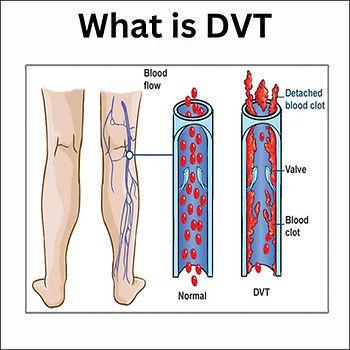
PATIENT WARMING SYSTEM
HYPOTHERMIA
The regular body temperature of a human is around 98.6°F (37°C), referred to as the core body temperature. A drop in this temperature results in a condition known as hypothermia, where the body loses heat faster than it can produce it, posing serious risks, especially to vulnerable populations.
Hypothermia should be confirmed by an accurate assessment of core temperature with a low reading thermometer. A rectal temperature is more practical even though it may lag behind core temperature 1. The probe should be inserted to an adequate depth, avoiding cold faecal material.
HISTORY
Patient warming Systems—Medical devices designed to maintain a patient’s normal body temperature, or normothermia, before, during, and after procedure dates back centuries. While early understanding linked cold exposure to lowered body temperature, the clinical recognition and development of dedicated warming systems primarily emerged in the mid-20th century, particularly in the surgical field, where the risk of inadvertent hypothermia during prolonged procedures became apparent. A prominent example is the forced-air warming system, developed in the 1980s by Dr. Scott Augustine, an anaesthesiologist in Minnesota.
ANESTHESIA INDUCED HYPOTHERMIA
Unintentional hypothermia (core temperature < 36 °C) is a common side effect in patients undergoing surgery.2 Hypothermia has significant physiological implications in surgical and clinical settings. While it is a powerful medical tool in certain conditions, unintentional hypothermia during surgery can lead to serious complications. It mainly results from anaesthetic-induced inhibition of thermoregulatory control and exposure to cold operating room environment. Also, the location and size of the surgical incision has a major impact on intraoperative heat loss.3 The symptoms of hypothermia include shivering, respiratory depression, cardiac dysrhythmias, impaired mental function, mydriasis (dilated pupils), hypotension, and muscle dysfunction. These symptoms can progressively worse, potentially leading to severe outcomes such as cardiac arrest or coma.4 To overcome hypothermia during surgical procedures, usage of warming systems are recommended.
FORCED AIR WARMING (FAW) SYSTEMS
Forced Air Warming (FAW) systems fall under the category of Active Warming System.They are widely recognized as the most effective intervention for maintaining core body temperature. Whereas, Passive warming methods include thermal reflective blankets and cotton blankets, provide a cost-effective solution, albeit with reduced efficacy compared to active warming measures.5
Forced Air Warming (FAW) systems are used to prevent hypothermia and maintain a normal core body temperature for patients during the preoperative, intraoperative, and postoperative phases of surgeries. It can also be used for Emergency & Trauma, Labor, ICUs and Paediatric Care Unit. It helps to reduce the risk of complications due to Surgical Site Infections (SSI), promotes faster recovery, and improves overall patient comfort and outcomes.
CODEX PATIENT WARMING SYSTEM & ITS ADVANTAGES
The Forced Air Warming System manufactured by Codex provides thermal comfort to the patient. It consists of the warming device which generates heat, blankets, and a hose pipe (to attach the warming device to the blanket). The warmer blankets are designed to bend & conform to the patient’s body allowing for use in
various Surgical Positions like Prone, Supine or Lithotomy. Depending upon the surgical site, patient’s position, and appropriate body part to be covered, different types of blankets are used.
Full Body Blanket
The warmer blanket that hugs the complete body of the patient offers maximum thermal transfer and prevents Hypothermia. The blanket is well flapped to avoid slippage and provides multiple access points to Arms , Shoulder , Torso, Core & Legs.
Upper Body Blanket
The upper body warmer blanket facilitates thermal transfer to the upper core often employed when the surgical site is lower body, allowing the targeted temperature control and preventing Hypothermia. Upper Body Blankets are preferred in procedures like Hip Replacement , Knee , Ankle & Spine Surgeries.
Lower Body Blanket
The lower body warmer provides warmth to lower extremities & helps in maintaining optimum core body temperature specially when surgical sites are Abdomen, Shoulder or upper body part. The lower body warmers can be used for surgeries like
- Laparoscopic Surgeries: Cholecystectomy , Sleeve Gastrectomy or colonic resection.
- Pelvic Surgeries: Total Lap Hysterectomy.
The primary safety hazard associated with patient warming systems is the risk of burns which is very well mitigated by Codex by enhancing safety features. It is equipped with a safety feature of sensors detecting overheating and its safety. The option to adjust the temperature based on the requirement makes it convenient for a patient to use the device at home as well. It’s even distribution of heat in cold conditions ensures that the body stays warm efficiently and prevents localized overheating or underheating.
BENEFITS OF PERIOPERATIVE NORMOTHERMIA
Maintaining normothermia during surgery has significant clinical benefits:
- Reduced Cardiac Events: A study on anaesthesia residents found that maintaining normothermia reduced morbid cardiac events (unstable angina, ischemia, arrest, MI) by 55%.
- Lower Infection Rates: Hypothermic patients were three times more likely to develop surgical-site infections (19% vs. 6%) compared to normothermic patients.
- Shorter Hospitalization: Perioperative normothermia decreased the incidence of surgical wound infections and shortened hospital stays.6
Note: Proactive temperature management, appropriate operating room environments, and the use of warming techniques are essential to enhance patient outcomes.
REFERENCES
- https://sci-hub.se/10.1016/j.jpeds.2004.02.037
- https://www.mdpi.com/1660-4601/18/16/8749
- https://doi.org/10.1080/23328940.2016.1243509
- https://doi.org/10.1016/j.autneu.2016.01.001
- https://pmc.ncbi.nlm.nih.gov/articles/PMC11684272/
- https://www.nejm.org/doi/full/10.1056/NEJM199605093341901

